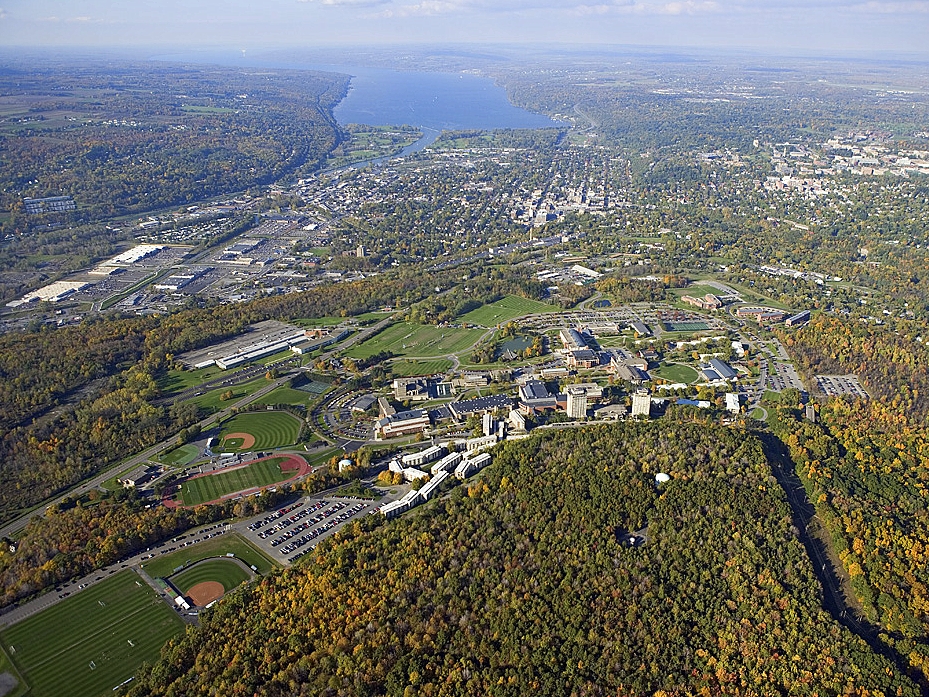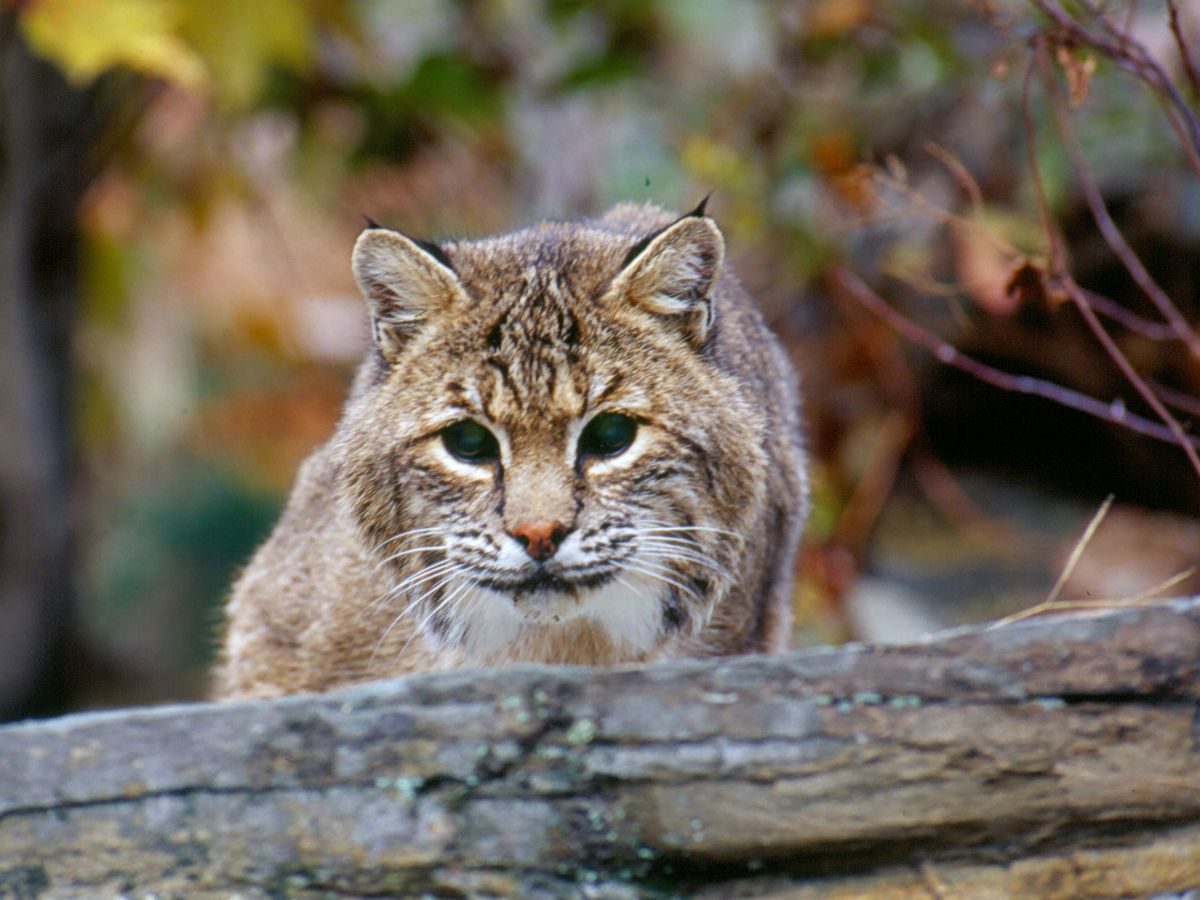Many millennia have passed since North America was a true wilderness. Even before European settlement, Native Americans altered the landscape with farming, hunting, roads, and diversion of waterways. Then, after the arrival of explorers and colonists, burgeoning population growth and economic expansion accelerated these changes.
Now, the Finger Lakes region is home to more than 1.2 million people. Our ubiquitous influence has made a patchwork of the landscape – urban centers, suburban sprawl, dairy farms, orchards, cornfields, vineyards, and remaining wetlands and forests, linked by a few big highways and countless smaller roads, as well as railroads and canals. A similar transformation has unfolded across eastern North America, whose population tops 200 million across the United States and Canada.
As a result, the natural lands of our region, and indeed of the whole continent, have never been so fragmented. Such fragmentation, in turn, has led to several serious and ever-growing threats to ecosystems and wildlife.
Isolation of populations and gene pools. When populations of organisms are broken into small isolated patches, they lose the capacity to withstand and recover from disease outbreaks, food scarcity, catastrophic weather events, and other dangers. Moreover, the genetic variation of isolated populations first freezes and then gradually declines, leading to risks of inbreeding, lower birth rates, and loss of adaptive potential. As a result, isolation can lead to local or even universal extinction.
Barriers to dispersal and migration. Even under favorable conditions, competition or overcrowding may compel wildlife to range to new areas in order to survive and thrive. Habitat loss and resource scarcity, especially in our era of climate change, make the capacity for successful dispersal and migration all the more imperative. But where suitable habitat exists only in isolated patches, wildlife is either trapped in place or forced while on the move to face mortal threats – low food availability, lack of cover from predators, motor vehicle collisions, and so on.
Edge effects. Fragmentation means less core interior habitat and more area at the interface with other landscape types. Edges tend to favor opportunistic and invasive species. Conversely, reduction and marginalization of core habitat can diminish reproductive success and increase mortality rates of sensitive native species, leading to perilous downward population spirals.
The emergence of this disjointed landscape has had a profound negative impact on many of the most iconic and ecologically important animals of eastern North America, which all need expansive continuous natural habitat in which to move – mountain lions, lynx, bobcats, wolves, bears, wolverines, fishers, otters, martens, porcupines, moose, elk, and all manner of reptiles, amphibians, and fish as well.
In response to these myriad threats, conservation planners and advocates seek to increase connectivity among remaining patches of natural habitats. We can achieve connectivity in various ways.
- Creation of wildlife crossings, including bridges and underpasses, for wildlife to travel safely across roads and other barriers
- Securing and expanding core habitat on both private and public lands through the creation of nature preserves, parks, wildlife refuges, wilderness areas, and so on
- Strategic acquisition and protection of lands adjacent to other natural areas, connecting patches and creating broad corridors for wildlife movement
- Particular focus on expanding protected buffer areas around riparian corridors
- Creation of incentives for rural landowners to protect their lands from development
- Restoration of disturbed areas
- Reintroduction of native plants and animals
The Finger Lakes Land Trust has made connectivity a touchstone principle of its work. Perhaps most notably, the Land Trust’s Emerald Necklace initiative seeks to fill gaps and create connections among more than 50,000 acres of protected lands around southern Cayuga Lake through strategic acquisitions, partnerships, and agreements with private landowners. Progress toward the ultimate vision of a continuous green corridor around Ithaca means not only room for animals to roam, but also expansion of recreational opportunities and protection of water quality in both the Cayuga Lake and Susquehanna River watersheds.
More broadly, throughout the Finger Lakes region, the Land Trust places strategic priority on identifying and conserving lands adjacent to other protected natural areas, thus ensuring the integrity of existing core habitat and helping restore the vital benefits of connectivity. Indeed, on an even larger scale, the Land Trust is coordinating its work with that of the Wildlands Network and the Rewilding Institute in support of their vision of the Eastern Wildway, an interconnected network of protected lands across eastern North America.
Piecing the landscape back together requires enormous sustained effort, funding, and collective will. We can do our part, starting right here in the Finger Lakes. Parcel by parcel, the Land Trust is transforming the map, turning isolated pixels into convergent green blocks interlaced by protected corridors – and perhaps eventually, connecting into a vast, coherent restored mosaic with all the colors of bygone wild America.



